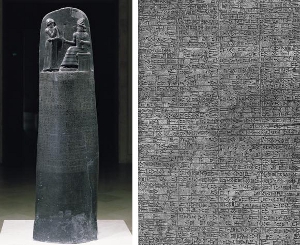A History of Court Reporting
Anyone familiar with the judicial system knows that a court reporter is an essential part of the courtroom process, but have you ever wondered how court reporting developed?
Various forms of shorthand reporting go back thousands of years and have always been an integral part of the legal system. Shorthand can be traced back to a man named Marcus Tullius Tiro. Tiro was a slave who belonged to the Roman philosopher, lawyer, and orator, Cicero. He was in charge of taking dictation and managing Cicero’s financial affairs.
Tiro developed a system of symbols and abbreviations. He omitted short or common words that he could add later by memory or context. Tironian notes weren’t just used for court reporting, dictation and other legal affairs - they were taught in monasteries and were common in everyday writing. Monks and scholars continued to expand Tironian notes, but the system declined in use after the year 1100AD.
In 1180, a monk named John of Tilbury created the first shorthand system for English speakers. Shorthand wasn’t widely used by English speakers until Dr. Timothie Bright published a system of 500 symbols to be used as English shorthand. Over the next few decades, several people developed English alphabet shorthand systems, including a man named Thomas Gurney, who was appointed the first official shorthand writer of the English government in 1772.
Still not content with its evolution, however, Isaac Pitman created a shorthand system in 1837 based on phonetics. It was used for decades and after numerous refinements became the pre-eminent system among England’s court reporters. Today, it is still the most commonly used system in England and its former territories.
Pitman’s system was replaced in the United States by John Robert Gregg’s form of shorthand, which became well-known in the business world as the standard method most secretaries used when taking dictation. Gregg’s newly devised system was based on the use of cursive rather than geometric symbols. The first American version of his shorthand system was published in 1893.
Soon after there was the introduction of the shorthand machine, which changed the landscape of court reporting and ended the Gregg system’s popularity in the United States. A court reporter named Miles Bartholomew obtained a patent of the first American shorthand machine in 1879, revolutionizing the industry and rendering the pen somewhat obsolete in court reporting. Later modifications were made to Bartholomew’s machine that resulted in it functioning more like a typewriter, recording a single letter with each stroke.
In 1906, Ward Stone Ireland invented a more sophisticated steno machine to record speech. In comparison to previous models, it had a high-speed keyboard with a minimal number of keys, a design concept that is still used today.
In 1909 the National Court Reporters Association (NCRA) organized the first National Speed Contest for shorthand in America. And by 1910 the Stenotype machine was introduced into the US court system. A world record of 350 words per minute was achieved by American Nathan Behrin during a 2 minute test using the Pitman system in 1922.
The 1960s marked the beginning of a period of social and technological change unlike any era before it. Verbatim reporters keeping the official Congressional Record were busy around the clock as the Civil Rights Movement became the focus of the nation. And "live" reporters were chosen over electronic recording to keep the record for the Warren Commission’s investigation into President John F. Kennedy’s assassination. Only 7,000 reporters were employed in the United States. This small number of qualified verbatim reporters created a serious hardship in states with small populations.
On the legislative front, NCRA continued to push for Certified Shorthand Reporter legislation. Only eight states has CSR laws, and the Association saw this as contributing to the problem of verbatim reporting not being viewed as a profession. President Johnson signed H.R. 3997 on September 2, 1965, which required U.S. District Courts’ proceedings to be recorded by both a tape machine and a live reporter. NCRA provided input on this version of the bill, and its requirement that a live reporter keep the record scored a coup for the profession.
With CAT technology becoming a topic of interest among the research and development segment - albeit at a slow pace - NCRA formed the Committee on Computer-Aided Transcription to study and help mold CAT’s impact on reporting.
In 1975 the Registered Professional Reporter designation went into effect on July 1, dividing NCRA’s membership into two classifications: Professional (today called Registered) or Participating Reporters.
A vital question facing participants in this industry is how technology will alter it. Some industry observers have predicted the demise of court reporting due to advances in computer technology and software. High error rates still existed with the use of such voice and speech systems by the end of the 1990s. Despite the advances in computer-aided transcription and voice-activated computer transcription, the profession of court reporting has flourished rather than suffered a decline.
New advances in real-time reporting, where notes are converted into text and projected on screens as they are recorded, allow synchronized video testimony. Real-time reporting has complied with the Americans With Disabilities Act by making testimony available to the vision and hearing impaired. Real-time reporting has made it possible for the court reporter to provide an instant transcript to be displayed on computer monitors for viewing.
On July 1, 2006, court reporters in the state of Alabama were required to be licensed.
Court reporters held about 21,500 jobs in 2008. A little more than half worked for State and local governments, a reflection of the large number of court reporters working in courts, legislatures, and various agencies. Most of the remaining wage and salary workers were employed by court reporting agencies as freelance reporters.
In Alabama today there are approximately 588 licensed court reporters.

